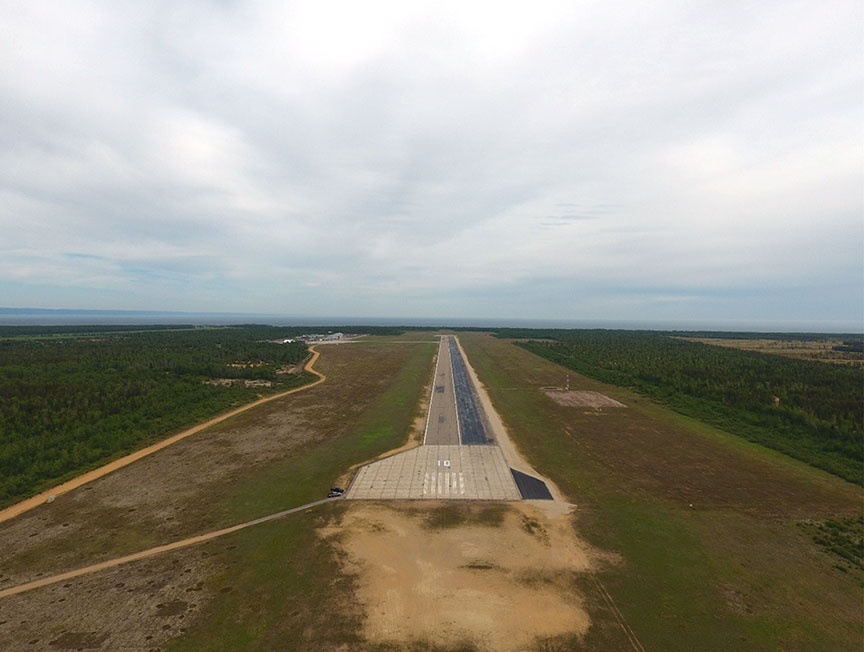Place du Centre
200 Promenade du Portage, 4th Floor
Gatineau QC K1A 1K8
12 July 2018
Aviation Safety Advisory A18Q0094-D1-A1
Related occurrence: A18Q0094
Letter addressed to Civil Aviation, Transport Canada
Subject :
Aviation Safety Advisory A18Q0094-D1-A1
Aircraft landing on the closed portion of reduced-width runways at airports where repair and maintenance work is being conducted
The purpose of this Aviation Safety Advisory is to alert your organization to the occurrence of aircraft landing on the closed portion of reduced-width runways at airports where repair and maintenance work is being conducted, and to encourage the immediate implementation of corrective action.
On 19 June 2018, the width of the runway at Baie-Comeau Airport (CYBC), Quebec, was reduced to 75 feet along its entire length for repair and maintenance work. A notice to airmen (NOTAM) was issued.
On 21 June 2018, an Air Creebec DHC-8-300 lined up with the runway's full-width centreline while on final approach for Runway 10 at CYBC. At the time, the flight crew did not distinguish the open portion of the runway from the closed portion. It was only when the aircraft was 200 feet above ground level that the flight crew noticed that temporary runway edge lights had been installed in the centre of the full-width runway. The flight crew conducted a go-around and returned to land without incident on the open portion of the runway.
On 24 June 2018, a Jazz Aviation LP DHC-8-300 operating as flight JZA8964 was on a scheduled flight from Mont-Joli Airport (CYYY), Quebec, to CYBC. Similar to the Air Creebec flight, the JZA8964 flight crew did not distinguish the open portion of the runway from the closed portion during the approach to Runway 10. Just before touchdown, the flight crew noticed the temporary runway edge lights under the aircraft and continued with the landing. The right landing gear touched down on the closed portion of the runway. As the aircraft was returning to the north side of the runway, one of the right main landing gear tires struck a temporary runway edge light. There were no injuries. The only damage to the aircraft was a blown tire. TSB investigation A18Q0094 is ongoing.
On 9 July 2018, a Netjets C680A landed on Runway 28 at CYBC and struck one of the temporary runway edge lights installed in the centre of the runway. The aircraft blew a tire.
Since 2015, similar incidents have occurred elsewhere in Quebec and Nunavut during periods of runway repair and maintenance work. In all of those incidents, the width of the runway was reduced using various temporary markings. For example, in 2015, similar work to that currently being conducted at CYBC took place at the Iqaluit Airport (CYFB), Nunavut, and the width of the runway was reduced along its entire length; a NOTAM had been issued to that effect. While the work was being conducted, the TSB documented 2 incidentsFootnote 1 in which the temporary runway edge lights had been struck. In both cases, a Boeing 737-200 was inbound to CYFB and while on final approach to Runway 16, the crews did not distinguish the open portion of the runway from the closed portion, and did not notice that temporary runway edge lights had been installed. In both cases, the aircraft struck a few temporary runway edge lights on landing and received minor damage. Nobody was injured.
From 2016 to 2017, repair and maintenance work was conducted at the Montréal/St-Hubert Airport (CYHU), Quebec; a NOTAM had been issued to that effect. Runway 06L/24R had been reduced to 5000 feet in length, and the width had been reduced to 75 feet along the entire length of the runway. During that time, there were 6 incidents,Footnote 2 one of which resulted in significant damage to the aircraft and was the subject of a TSB investigation. The investigation report on that incident was published on 03 July 2018.Footnote 3
In some of these occurrences, air traffic services (ATS) had not specifically informed the pilots about the partial closure of the runway, and were not required to do so. However, communication with ATS prior to landing is an additional defence that is not always used, but could reduce the likelihood that these types of occurrences will take place.
Given the number of incidents that have taken place on reduced-width runways, it is very likely that similar incidents will occur again. The consequences of landing on the closed portion of a runway are evident and can lead not only to significant damage, but also to serious injuries to the aircraft occupants.
These occurrences show that, even though NOTAMs had been issued advising of the partial runway closure, pilots were not able to quickly distinguish between the open portion and the closed portion of the runway. Therefore, it is reasonable to conclude that the runway markings used during this type of work have not been effective, as the flight crews incorrectly believed that the entire width of the runway was available.
Consequently, Transport Canada may wish to review the runway markings used during repair and maintenance work and to encourage stakeholders to take additional safety measures to reduce the risks related to partial runway closures and the reoccurrence of such incidents.
The TSB would appreciate being advised of any actions taken in this regard, as they may be included in Aviation Investigation Report A18Q0094.
Original signed by
Natacha Van Themsche
Director of Investigations – Air
Cc.
- Aviation Security Policy, Transport Canada
- NAV CANADA
- Conseil des aéroports du Québec
- Canadian Airports Council
Background information
This safety communication no.: A18Q0094-D1-A1
Occurrence No.
A18Q0094
Contact
Mario Boulet, Regional Senior Investigator - Technical, Dorval Regional office, Quebec
